Alan Taylor
Last night I went to see “1917” and it was one of the most amazing movies I’ve ever seen. Much has been said (quite rightly) about the way that it appeared to be one single continuous shot for the entire movie and of course the DoP was awarded an Oscar for it.
John Nottage
“1917” is a must see movie – brilliant!
Geoff Hawkes
My wife and I went to see the film about three weeks ago and we were really impressed. The film runs for about 2 hours and the reputed one-continuous shot thing puzzled me as to how it could be achieved. I wondered what happened if they got nearly to the end and something went wrong; would they have to start again from the top (groan, groan, imagine!!). I asked Ian Head, a veteran cameraman about this and he said all that meant was that it would have been done in a series of single shots, each with no cut-aways and involved a change of mounting, e.g. for high-angle shots. It worked well and I was thankful that none of them were the dreaded wobbly-cam style.
We saw it in IMAX at Jarman Park, Hemel Hempstead and had a choice of that, the later Super-Screen or good-old 2D. We sat about half way up the auditorium and wished we’d sat further back as the fast action shots from side to side sometimes had our heads buzzing.
What Alan Taylor has said about the contrasting sound levels was perfectly true and the occasional loud bursts, like when the plane crashed had the shocking effect intended, adding to the reality of the wartime experience which is what it was all about. I had taken earplugs with me in case it was all loud as is so often the case nowadays and was glad not to need them.
I recommend anyone who hasn’t seen the film to go and see it in Superscreen or IMAX if you can, but don’t sit too near the screen unless you really want the dizzying effect.
Graham Maunder
Both Sam Mendes and Roger Deakins tried hard not to talk too much about the ‘one-shot’ element of the film as they didn’t want people going to see it to be constantly looking for the ‘invisible’ cuts.
The longest shot in the whole film is actually only just 9 minutes and perhaps the real skill involved was the planning of the shots followed by the execution of the shot combined with the editing to make it look like there wasn’t an edit!!
I know that many times during the film Sam Mendes asked himself why he was putting himself (and everyone else!) through such a nightmare!!
Great film although strangely I thought it was better non IMAX…
However, apart from the very ending which I thought was a pretty poor cop-out, “Parasite” was a very worthy winner of the Best Film Oscar and was, in my humble opinion, a better film.
Alan Taylor
There are several YouTube videos explaining how they shot the movie. Here is the link to one of the better ones… and I’m sure they would be fascinating to many on here. It was mentioned that some takes were as long as six minutes, so there would have been many edits in the movie, but of course it was cleverly done so that they were virtually unnoticeable.
One thing that you could see in the videos was how the camera was sometimes mounted on motorised gimbals and slung below a one metre length of scaffold tubing. They show sequences where the camera rig starts off mounted on a huge motorised telescopic camera crane (TechnoCrane?) and when it is swung down to near ground level, two operators grab either end of the pole and smoothly lift it off the mounting hooks so that they can continue the sequence running along with the rig. There are a lot of sequences which appear to use SteadiCam with a short jib arm to allow height changes while moving. There is also a sequence in the ruined village at night where the camera operator runs along and steps on to a motorised platform to continue the shot travelling faster that would otherwise be possible.
Incidentally, some people complained that the movie was relentless and always on the move, but Sam Mendes explains that war is like that. “… You can’t go back, you have to keep moving onwards …” and that’s exactly the effect he was trying to achieve.
When the main character swam along the river and climbed out, I wondered how long his clothes would remain wet for, but chuckled when the next scene showed him running through a forest in very windy conditions. I assumed that they must have decided to use big wind machines to create a drying wind to explain how his uniform might dry so rapidly.
There are also some interesting explanations about how the art department created the trenches and the sheer scale of those sets. One of the extras also tells about a single tree which was standing near the action for the final big battle scene. The Honey Wagon was quite some distance from the location and at least a hundred extras urinated against that tree as a quicker option than trudging back to the Honey Wagon. To their horror, the final scene is of our hero sitting down against that tree. They had no idea that the tree was going to be used for such a prominent shot.
Dave Mundy
Many years ago there was a famous French film where the opening shot was a long zoom across the landscape ending up in a CU – this was long before modern tech. was available. I also loved the YouTube video about a long shot down a street from a drone and the cameraperson catching the drone and going indoors with it still shooting! Ain’t tech. wonderful?
Bernie Newnham
And there’s this:
Full version here:
Pick it up at 07.50 …
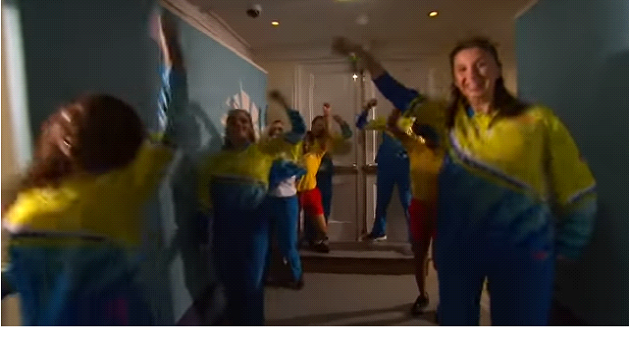
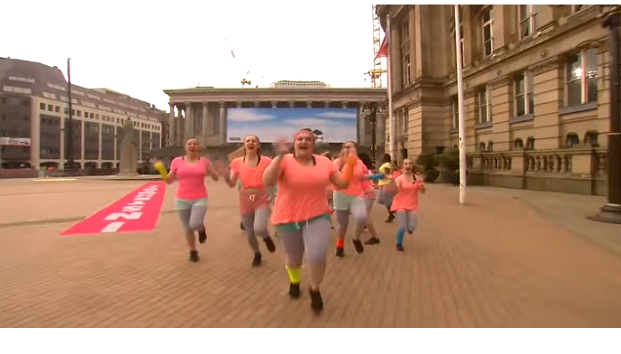
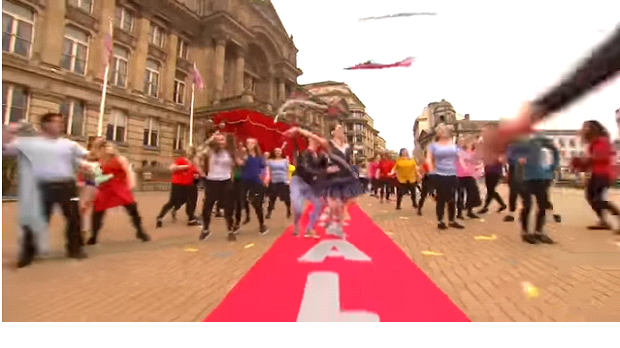
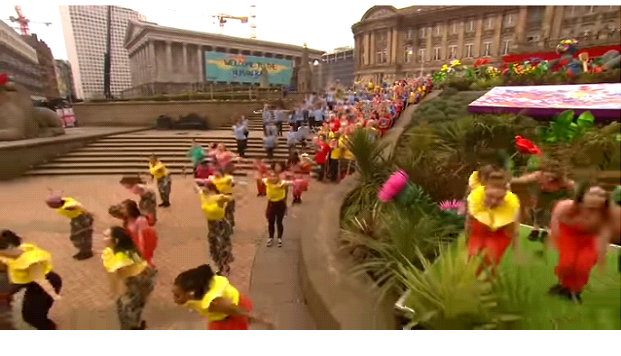
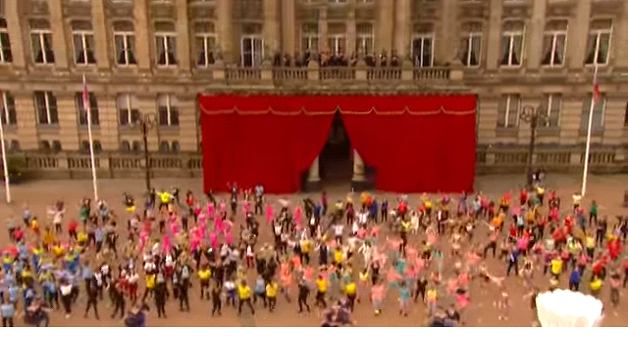
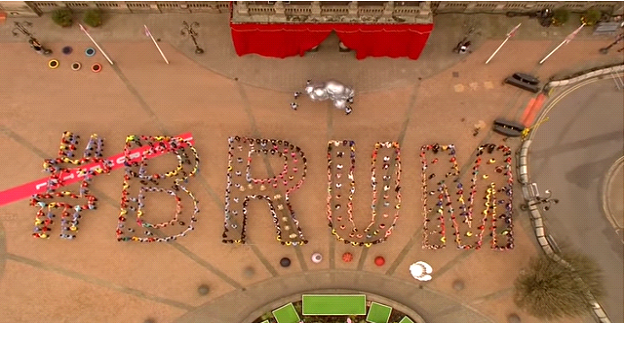
Bill Jenkin
You might find this bit of clever camera stuff interesting. It was live in Victoria Square Birmingham celebrating the handover of the Commonwealth Games.
Any suggestions as to how they did it – it was all live don’t forget and all one shot until the final top shot.
John Howell
…..with a foldback speaker slung under it? or 500 in-ear monitors?
Most Impressive!
Bernie Newnham
This from the Birmingham Mail – Commonwealth Games Handover – has the answer – I think.

SteadiCam on a step-on trailer behind an electric truck. It’s a bit long distance, but I think that’s what it is.
…There’s also a ginormous crane in the square.
…the dancers were listening to the song on earphones.
The only noise in the square was the buzzing of the drone camera above the performance.”
Making of …
Sony P1 camera with a Canon HJ14 HD lens, using a Nano RF Video link
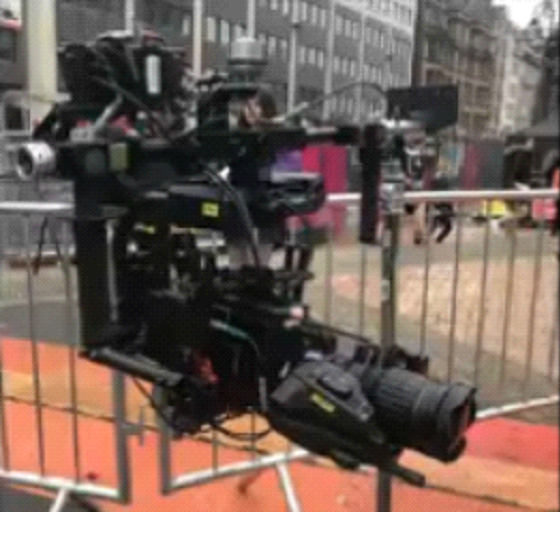
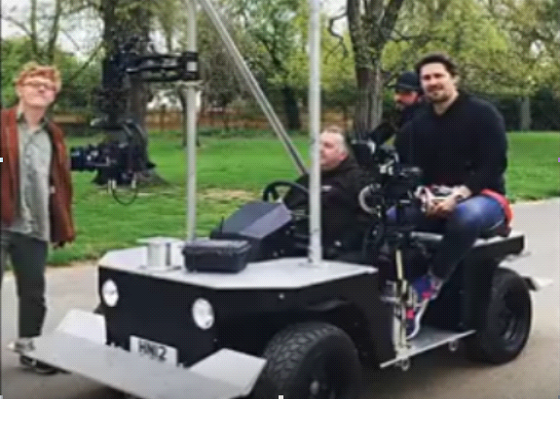
Multiple hula hoop hand-offs between two operators whilst the rig was being operated by the remote operator.
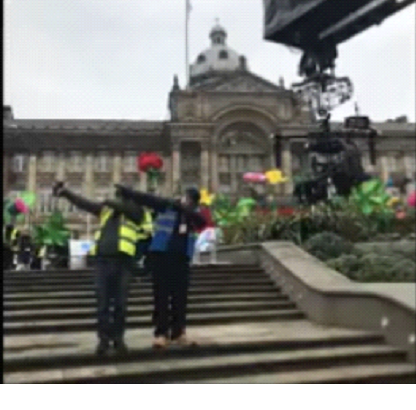
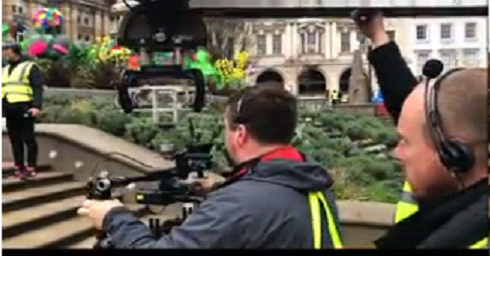
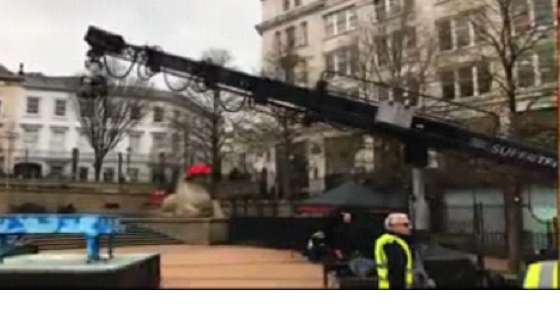
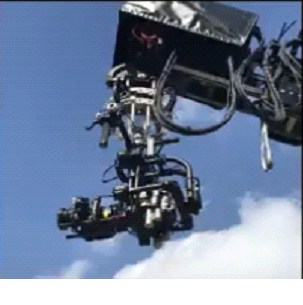
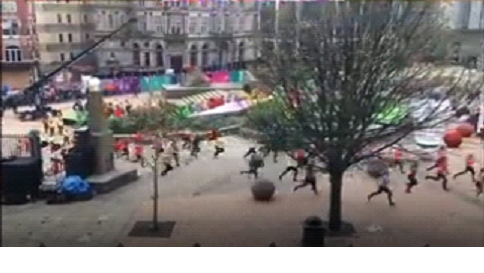
Peter Neil
Various Facebook posts show that it was 2 TechnoCranes, a SteadiCam-type device (not SteadiCam itself) and a thing called Shotdock – which allows transfer of camera between mountings while on shot.
Just found this:
“…This 6 minute, 1 take shot featured 2 crane hand on and offs on a 50ft Techno & 75ft Techno with our custom Shotdock system as well as 2 tracking vehicle moves and moving in and out of 2 buildings! Thank you to everyone involved, we won’t be forgetting this one anytime soon!…”
Bill Jenkin
I gather the hand held stabiliser device is called a Movi.
Nick Ware
I’m sure you all remember the phenomenal Eurovision Segway/SteadiCam shot from Belarus eight years ago. Gets me every time I see it!
Starts at 2’18” if you don’t want to see it all.
Play loud, it adds to the impact!
If that link doesn’t work, just search Eurovision Steadicam, it’s that famous!
Roger Long
Fyffe Robertson’s reports for “Tonight” started tight on a 20-1 Angenieux Zoom and pulled back to a 10mm wide of the entire valley/city. Sometime 5 cable drums of cable were needed for his stick mic STC 3021.
“War Games” opener was on the back of a DR motorbike and the camera was lifted off and up a flight of stairs into the Town Hall. All shot in the 1960s on film. Very low tech.
In the late 1980s, Alan Clarke was doing entire 90 minute films on Steadicam with few cutaways. Film was a lovely plastic medium.
What Sam has is an ultra plastic medium and unrivalled post production where practically anything can be achieved, and very creative craftsmen.
I recorded two WW1 dramas for the Beeb. One was a romance, one a gritty portrait of an alleged mutiny. Design dug trenches in chalk for the first and in peat for the second, that was much more pragmatic, as it could flood if not pumped overnight, which was useful and the explosions from cast iron pots always looked better, the ground shook.
I also did 10 years of “War Walks” History Documentaries on the Western Front and beyond. We visited real trenches and Saps revealed by building works and groundworks, all in amazing good order. We did a lengthy interview with a sapper historian underground, the next week he died in a similar earthwork when the roof subsided. We did a re creation of Gas attacks and the difficulties of deploying gas en masse, all very sobering from sending to receiving.
I really enjoyed the experience, if that is possible, mostly in the winter months with a terrific Brigadier presenter, most moving. The most frightening image I saw was horses hanging in beech trees from blast and testimony from machine gunners on ridge emplacements mass killing at very long ranges.
Trench hand-to-hand [fighting] and raiding at night .Impossible to render for TV . “1917” in a good cinema might.
Tony Nutall
My Favourite ONE SHOT film.
I bet the cameraman and the chap who carried the Video Recorder were a bit knackered by the end of the single shot with the pressure of a no chance “lets do it again.” No special invisible edits here!
![]()
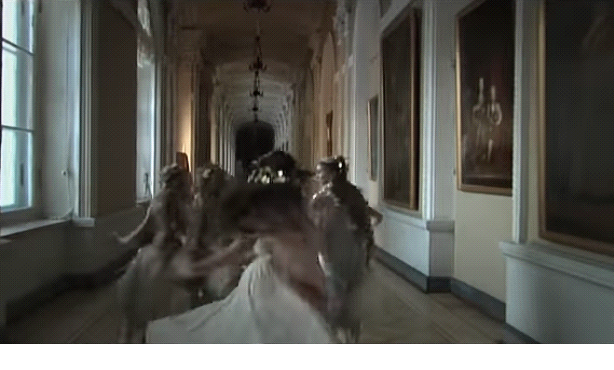
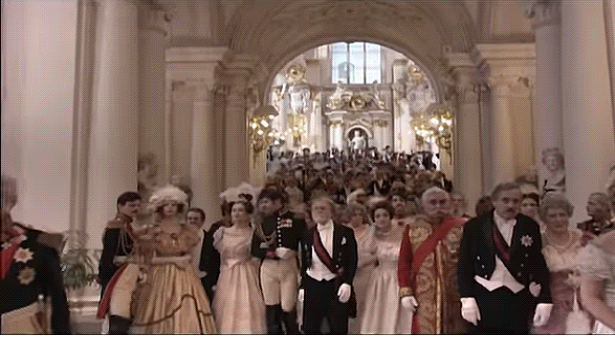
From the web:
“…Alexander Sokurov’s spellbinding masterpiece “RUSSIAN ARK” is a multi-award winning film consisting of one unbroken camera shot that moves through St. Petersburg’s Hermitage Museum. It’s a staggering work of art, an impressive technical feat that is also cinematic poetry of the first order…”
Graeme Wall
If I recall correctly, they did do one retake, stopped and did a restart after a couple of minutes but once into it they just had to plough on.
The longest single shot I’ve done was about 15 minutes, single camera coverage of a live set by The Darkness to feed the close-up monitors for the audience. The director didn’t just want a shot of the lead singer but the instrumental breaks and dance routines and all the transitions usable as it was going to be repeated on MTV. Ad lib with no rehearsal!
Nick Way
Not Film but Television.
I was on my Camera Attachment on Crew 5 in 1980. The play was “The Lad Himself”.
The Director, Alistair Clark (I’ve just looked at BBC Genome), had obviously spent a long time on the Camera script with many shots. So Jim said: “We’ll do the opening shot of the whisky glass on me, take the establishing shot on two, then the rest on one… son!”
I stayed close to Jim holding his released camera cable (EMI 2001) for the next twenty minutes as he moved around the small BBC Dressing Room set on his traditional wide. It was a privilege and has always stayed in my mind.
Dave Buckley
Some friends of ours went on a cruise which took in St. Petersburg’s Hermitage Museum. When they came back, they lent me the DVD of the “Russian Ark”, which had a very interesting ‘How they did it’ video on it.
The video recorder was a box of hard drives on wheels which was ‘hard wired’ to the camera and was pushed around to follow the camera during the shoot. The end result is take three after two false starts.
Here in Dumfries, the local Odeon closed not so long ago. However, we have a very pleasant council run 60 seater cinema which produces a programme every month covering a wide range of films.
Later this month, “1917” is on 13 times over nine days, so my wife and I are hoping to get along to see it. Prices vary a bit – normally £7.50 but can hit £12 for specials such as “42nd Street” which we saw end of last year. The cinema ran “2001” last year for a few days (with an interval), and it was a pleasure to see the film again without being blown out of my seat by the sound level, which was one of the complaints about the Odeon. In fact, I had forgotten how good “2001” was on the big screen!
Dave Plowman
I worked on a few shows which were one shot. But being ITV, this meant only about 10 minutes continuous shot. On one, we rehearsed for a day and a half before even putting the camera on it. But had it in the can early day 3, and wrapped very early that week.
I also remember doing a scene all in one. In a disco. The director was very concerned that it sounded (and looked) realistic. Shouting over the very loud music and into ears etc. So I was willing to give it a try with the music running full belt. I did check that he was happy with the music choice first and the part of the track.
It worked very well indeed. All on a couple of booms, with a small bleed of another stereo mike for ambience.
In the edit, the editor decided to go between two takes… He couldn’t understand why we’d done it the way we had.
John Vincent
“Touch of Evil”, Orson Welles, does it for me. No computer wizardry and some good ‘Ready when you are Mr de Mille ‘ back stories.
[Ed: in connection with this, it is useful to consider the Orson Welles memo in respect of this film. It begins:
“ …As the camera roves through the streets of the Mexican bordertown, the plan was to feature a succession of different and contrasting Latin American musical numbers – the effect, that is, of our passing one cabaret orchestra after another. In honky-tonk districts on the border, loudspeakers are over the entrance of every joint, large or small, each blasting out it’s own tune by way of a “come-on” or “pitch” for the tourists. The fact that the streets are invariably loud with this music was planned as a basic device throughout the entire picture. The special use of contrasting “mambo-type” rhythm numbers with rock ‘n’ roll will be developed in some detail at the end of this memo, when I’ll take up details of the “beat” and also specifics of musical color and instrumentation on a scene-by-scene and transition-by-transition basis…” [Welles memo] ]
Stan Appel
Anyone out there who worked with me on “Peter and the Wolf”?
We did the half hour programme in one take. No invisible cuts or hand overs.
Where is our Oscar?!!
See:The Developing Camera Shot
Nick Ware
And wasn’t there a Rudolph Cartier production of “Galileo” all shot on one continuous Mole-mounted camera, Frank Wilkins, and starring Leo McKern as Galileo? A huge monastery set in TC1, and I think the first time we had an Angenieux 10:1 lens.
Where’s Frank’s posthumous Oscar? I think he deserved that anyway, whatever.
[Ed: In this context, please see the entry “Casualty Saturday 29 July 2017” on page Programmes May To November 2017. Dave Buckley noted that that episode of “Casualty” had been shot as ore continuous take. The director said that this is the first time this has been done – effectively a 48 minute shot. ]
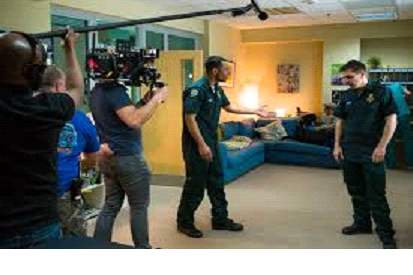
Alec Bray
(email to Dr Douglas McNaughton)
…Visible and invisible performance and the contribution of the camera as an actor in a scene was not confined to high end drama, but ran – and runs – through the whole of multi-camera television, not excluding Light Entertainment.
You could not have had a better example of this than during “Dancing on Ice: The final” on Sunday 08 March 2020, firstly during Joe Squash’s first performance, but more particularly during the Torville and Dean Exhibition Dance, where the camera was fully choreographed into the routine – it was part of the routine. and a full performer along with the skaters (the camera was in a harness on a skating cameraman). It was done as one continuous shot, too.
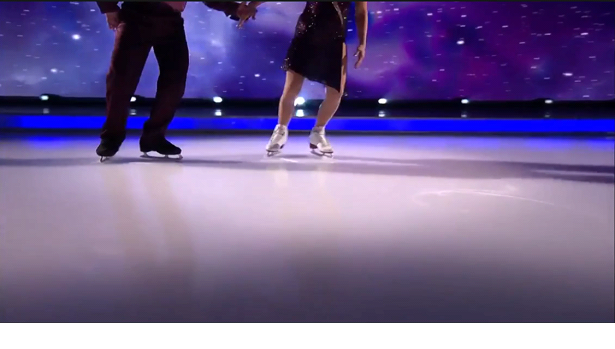
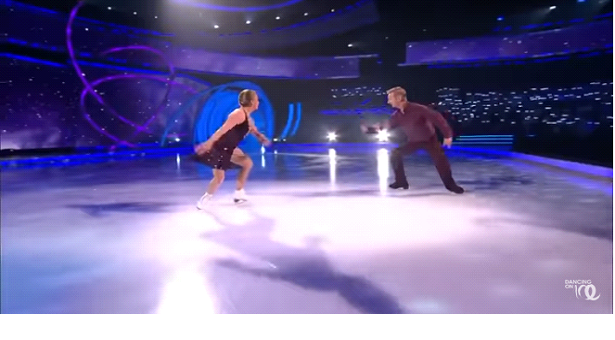
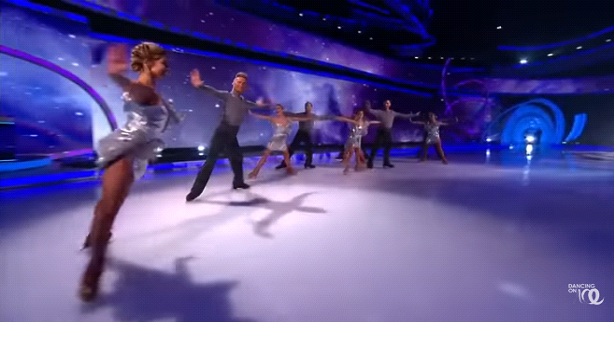
Tony Grant
A fascinating thread, encompassing several aspects of ideas and practical techniques I struggled to espouse during my career, and did my best to pass on via the training sessions and workshops I was involved in.
On the subject of single shots for a scene, this is nothing new, although back in the day, not nearly as sophisticated as the recent shot on “Dancing on Ice”. Would you believe, the first inspirational shooting I witnessed was Ian Perry ‘dancing’ through some dancers using the tiller on the HP ped to manoeuvre in and out between them. To the best of my memory, it was a shoot on an L.E. programme in R1 in about 1965, so B&W and a Pye Mk5. The routine lasted around 3 minutes, but as far as I could tell, Ian simply did his own thing weaving in and out between them.
OK I said to myself, that’s the sort of thing I’d like to do, and although I didn’t quite manage a similar dance routine, I dearly loved using the tiller to steer a ped around on any development shots I might have had back then. Later, although the majority of crew welcomed the introduction of the Fulmar, I was dismayed to find that the tiller had been omitted. I had several long conversations with Vinten, and although I understood their point that the increase in vertical movement, especially the depth, meant that the tiller could obstruct this and become an operational hazard if not handled correctly (no pun intended). I argued that they could have designed it so that a tiller could have been an optional attachment, removable if the shot dictated its positioning would impede or adversely hinder movement – but you all know how far my arguments got!
Back to the single shot story, I’m sure there are several others on this forum who have worked on these type of shots, especially on musical inserts on “Late Night Line Up” for example. Knowing my musical leanings I was frequently asked if I would like to do a single shot on a musical performance, and one such I recall was a classical guitarist (sorry, I’ve no idea who) where I listened to him play the piece and then went for a take simply gliding slowly around the man and guitar, tracking, crabbing to and fro, in and out, in time to the music, on a HP ped and PC60 in Pres B, so no stress, one take, all OK everyone, right next item.
One of my most challenging single shots was on “The Love of Three Oranges” – crew 2, with all the photos taken on day 1 when I was still returning from holiday in Northern Ireland. The 2nd day I had a single shot on a Fulmar at the bottom of its column panned up to follow movement backwards and forwards (well actually crabbing to and fro) as the action moved horizontally from side to side on a raised set. I was shuffling about on my hands and knees, and it was one of the most difficult studio shoots I ever performed, although I was pretty chuffed at the end of the take. For whatever reason however, we had to do another couple of takes, and whilst I more or less managed, I don’t think either was technically as good as take 1. Just my luck, boy, I could have definitely used that tiller to good effect had it been available.
So, I’m sure there are still plenty of similar stories out there if you wish to share them, from the Stanley Dorfman epics, through to OGWT, where whatever happened on a rehearsal (if one materialised) was unlikely to be repeated on transmission. I’ve always described how a crew worked on these ad lib scenes as a three dimensional/spatial awareness exercise, since each crew member had to be aware of the position of all other cameras, which one had the red light, how and where it was moving on shot, be able to keep out of the way, reposition when necessary, and offer a complimentary shot (and note to our sound colleagues, yes, do this silently, without dropping pencils – although I suspect they may have something to do with the elimination of the tiller, how many times did you let go and hear a clang as it hit the ring steer?).
Ah yes, and the input from all those highly paid and credited production staff, producers, directors, et al on these productions? (Puts tongue in cheek) – ‘Feel it, love.’
++++++++++++++++++++++++++++



